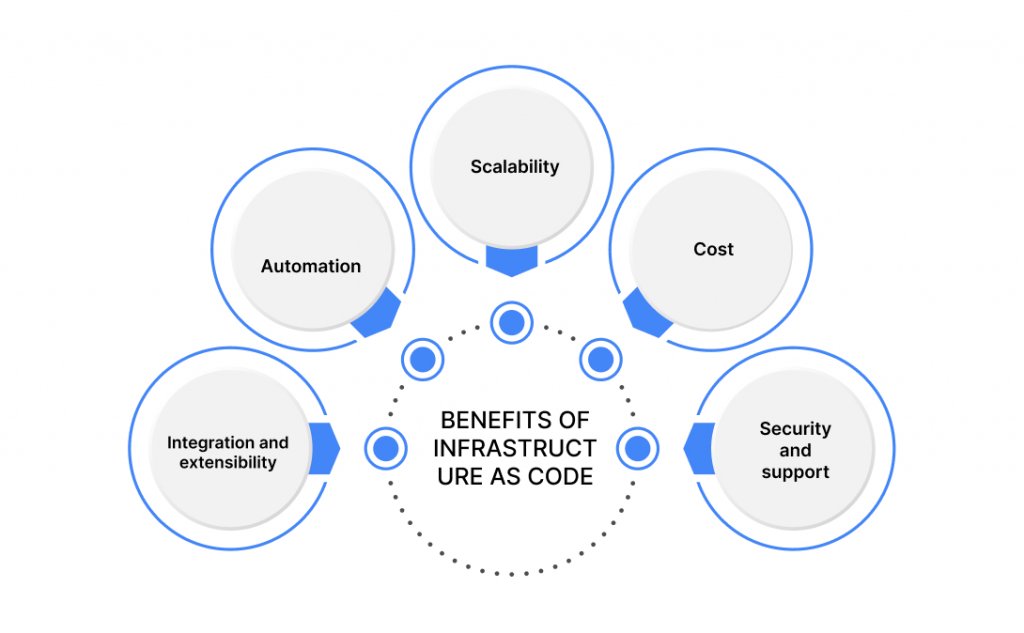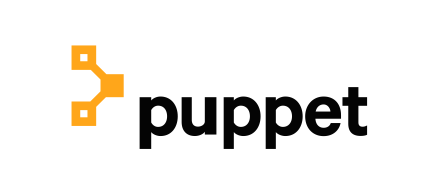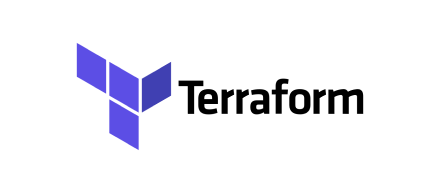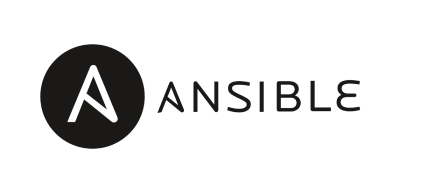Every industry looks for efficient strategies for building and deploying agile, flexible, and scalable applications. In the traditional method, infrastructure environments are manually configured, which is time-consuming and prone to error. However, many organizations are now embracing Infrastructure as Code tools to overcome this challenge.
Infrastructure as Code (IaC) offers a reliable and robust way for companies to design and build IT infrastructure today. DevOps teams can use IAC tools to set up infrastructure resources like load balancers, virtual machines, and networks. It provides DevOps and NetOps teams with a consistent framework for automating provisioning, configuring, and managing IT resources.
Using the best Infrastructure as Code tools, you can now configure and deploy servers in a fraction of the time. Let’s review some of the most useful IaC tools for your business in 2024.
What is Infrastructure as Code?
Infrastructure as Code (IaC) is a method of codifying and managing underlying IT infrastructure as software. A key purpose of infrastructure as code is to enable developers or operations teams to manage, monitor, and provision resources automatically instead of manually configuring discrete hardware devices, operating systems (OSes), applications, and services. Sometimes, IaC is called programmable infrastructure or software-defined infrastructure.
IaC is similar to programming scripts, which automate IT processes. In most cases, scripts are used to repeat a series of static steps across multiple servers multiple times.
The provisioning and deployment processes created by IaC are more versatile and adaptive due to the use of higher-level or descriptive languages. A configuration management tool, Ansible, allows IaC capabilities to install MySQL server, verify that it is running correctly, create a user account and password, create new databases, and remove excess databases.
What Makes Great IaC tools?
A good IaC solution depends on your infrastructure requirements and preferences. When it comes to researching and choosing IaC software, there are a number of factors that need to be considered. Here are a few:

- Integration and extensibility
The most important thing to consider when selecting IaC tools is robust integration and extensibility options. The IaC tool should have APIs for integrating with external services and systems and a library of plugins to extend its functionality.
It gives you the flexibility to customize your workflow according to your requirements. You can also develop custom integrations and connectors using good extensibility options if needed.
- Automation
When choosing tools for Infrastructure as Code, it is important to consider the automation of the tool. Many IoC tools offer automation features, so comparing them based on automation is crucial. With a proper automation tool, you can reduce human error related to manual infrastructure deployment, configuration, and management.
- Scalability
The ability to scale up or down quickly and easily is a key component of DevOps best practices. You should consider an IaC tool with scalability features like dynamic orchestration and autoscaling. You’ll ensure your environment has enough resources without overprovisioning or wasting them.
- Cost
Infrastructure as Code tools provide significant cost savings compared to manual infrastructure setup and maintenance. You should choose an IaC tool that balances cost efficiency with the most important features of your organization.
Make sure you compare vendors’ pricing models and check out free trials before deciding. Also, check whether third-party applications or additional users require licensing fees.
- Security and support
You should always consider security when evaluating technology. In many IaC solutions, security features such as identity access management (IAM), encryption, and data loss prevention are built-in. Choosing an IaC solution with dedicated customer service and technical support is also a good idea.
If you have problems, find out whether they offer live chat, email, phone calls, or forums for technical assistance.
Infrastructure as Code (IaC) Tools: Top 13 Picks
- Puppet
- Terraform
- Ansible
- Chef
- Pulumi
- AWS CloudFormation
- Crossplane
- Vagrant
- Google Cloud Deployment Manager
- Brainboard
- Azure Resource Manager
- Saltstack
- Spacelift
1. Puppet

The Puppet configuration management tool is commonly used to manage several application servers simultaneously. A powerful tool that manages your infrastructure’s configuration, Puppet is one of the oldest players in the IaC market.
The system configuration is described in a declarative language, and a large ecosystem with thousands of modules supports it. You can also describe the desired end state of your infrastructure using a Ruby-based DSL-like chef. Several significant companies, including Reddit, Dell, and Google, use Puppet in their data centers.
Puppet is an IAC tool that enables you to deploy infrastructure quickly and securely. Various developers have created modules to extend the software’s functionality. Puppet integrates with almost all the leading cloud infrastructure as code platform providers, including AWS, Azure, Google Cloud, and VMware.
Key Features:
- The largest open-source developer community
- Puppets can be used on various platforms
- The solution works well even in large infrastructures (managing thousands of hosts).
- It is designed specifically to manage Linux and Windows configurations.
- The system configuration is described in a domain-specific language (DSL) written in Ruby.
2. Terraform

Hashicorp’s Terraform is an open-source and self-managed tool. Today, it is amongst the most popular IaC tools. Since it can define cloud and on-prem resources in a human-readable way, it’s pretty powerful. Also, you can reuse and share the modules you create regardless of the cloud platform.
Terraform’s plugins communicate directly with the cloud provider, SaaS provider, and other APIs. Publicly available providers can be found in the Terraform Registry. A Terraform module can be directly used from the registry or written from scratch.
There is more to Terraform than just managing infrastructure configurations. It allows you to start from scratch when setting up your infrastructure. You can also define network resources and combine resources from different providers.
Furthermore, it integrates seamlessly with VCS like GitHub so that infrastructure changes can be made automatically.
Key Features:
- The Terraform plan allows users to preview changes before applying them.
- It maintains a state file to monitor the current state of the infrastructure.
- Ensures consistency and reduces drift by treating infrastructure as immutable elements.
- It allows you to manage infrastructure across multiple providers at the same time
- It uses a declarative language called Hashicorp Configuration Language (HCL).
- This tool enhances reusability
3. Ansible

Ansible is one of the best open-source infrastructure as code tools available. It is built on the Red Hat Ansible Automation Platform. Teams can focus more on innovation and reduce manual tasks with it. With its event-driven approach, Ansible is a leader in infrastructure automation.
A key feature of Ansible is its ability to configure the desired end state of your infrastructure using modules called “Playbooks” written in YAML. In cases where the default modules cannot solve your use case, Ansible allows you to write your own modules and plugins.
It automates many repetitive and complex tasks, saving you time when installing packages or setting up many servers. For example, you spend a lot of time building Playbooks, but setting up new machines becomes super fast once you have enough.
Key Features:
- Network automation, edge automation, hybrid cloud automation
- Security automation and centralized configuration management
- Provisioning, Red Hat Insights, and automation analytics
4. Chef

Chef is one of the most notable IaC tools in the industry. Chef allows users to create code and specify step-by-step ways to achieve the desired state. It’s up to the user to decide what deployment process works best for them.
With Chef’s Ruby-based DSL, you can create recipes and cookbooks. These recipes and cookbooks on existing servers describe how to configure your applications and utilities.
A scalable and secure infrastructure automation process can be deployed with the help of this infrastructure management tool. With Devops consulting services, you can easily provision and deploy on-demand infrastructure with Chef. Enterprises use it for continuous integration and delivery processes. Many configuration management solutions are available, but Chef is among the most popular.
Key Features:
- Easy-to-use and intuitive UI
- Great documentation and training
- Powerful open-source configuration management
- Continuous compliance
5. Pulumi

Another open-source configuration management tool, Puppet, manages several application servers simultaneously. Recent years have seen Pulumi become a very popular IaC tool. A free and open-source platform for infrastructure as code, Pulumi was created by Microsoft and Google veterans.
It is easy for developers because it uses a programming language to define infrastructure resources. It features a powerful workflow engine that makes managing complex infrastructure deployments easy and supports many cloud providers.
Pulumi’s Cloud Engineering Platform helps you Build, deploy, and manage your infrastructure.
Pulumi lets you model your cloud infrastructure in various languages, including TypeScript, JavaScript, Go, .NET, and YAML. Furthermore, it provides access to over 60 other providers, including Amazon Web Services, Google Cloud Platform, and Microsoft Azure. You can reuse your cloud infrastructure code as Pulumi packages.
Key Features:
- With this tool, you can use popular programming languages such as JavaScript, TypeScript, Python, Go, and . NET.
- It enables the definition of infrastructure using programming constructs.
- It ensures efficient infrastructure deployment by managing dependencies intelligently.
6. AWS CloudFormation

One of the leading IaC tools on the market, Amazon Cloud Formation, offers infrastructure code provisioning services. The solution scales up cloud resources worldwide, automates resource management through key integrations, and offers turnkey application distribution and governance controls.
AWS CloudFormation provides a common language to describe and provide all your cloud environment’s infrastructure resources.
Designed exclusively for AWS, it enables seamless, automated deployment of AWS-based infrastructure by orchestrating and managing AWS services. As a result of this tight integration with AWS, CloudFormation is always up-to-date with the latest AWS features and services.
Key Features:
- This supports a wide range of AWS resources.
- The service seamlessly integrates with Amazon Web Services for native functionality and support.
- Stack management simplifies infrastructure management by organizing resources efficiently into stacks.
- Users can preview and confirm changes before implementing them, enhancing control.
7. Crossplane

Developed by Upbound, Crossplane is a cloud-native control plane framework. The tool lets you build your platforms with control planes. This facilitates the orchestration of applications and infrastructure across multiple environments.
This tool is used widely by Cloud Architects, DevOps Engineers, IT Managers, Software Developers, and Infrastructure Professionals.
The Crossplane Resource Model (XRM) allows you to standardize resource management between Kubernetes, Crossplane, and your cloud platform. Important information, such as credentials, connection secrets, and status conditions, will be handled correctly, no matter which provider you use.
Regardless of company size, this tool can be used by small startups and large corporations alike. It serves technology, Finance, Healthcare, Retail, and Manufacturing industries.
Key Features:
- It supports multi-cloud deployments and allows infrastructure definition directly from Kubernetes.
- It creates a control plane for cloud services using Kubernetes clusters.
- It manages external resources via Kubernetes API extensions.
8. Vagrant

The Vagrant solution from HashiCorp is designed for small-scale computing environments. In contrast to Terraform, which focuses on large-scale cloud infrastructure, Vagrant uses declarative definitions to enforce uniformity across systems with other IaC tools, such as procedural ones. Moreover, it is compatible with Mac, Linux, and Windows operating systems.
Vagrant allows you to set up a Virtual Machine, run your tests, and save all configurations in a Vagrantfile. It can be shared with other developers to ensure they can reproduce the same results.
Vagrant can be used with VirtualBox, AWS, and any other cloud provider that offers VM solutions. The tool can also integrate with other Infrastructure As Code Tools, such as Chef and Puppet.
Key Features:
- HTTP tunneling
- It provides automatic networking
- Infrastructure asset management
- It ensures a uniform development experience across Windows, macOS, and Linux.
- Written in Ruby, it simplifies the process of setting up and sharing project-specific configurations
- Supports various provisioners and providers, allowing for automated setups and compatibility with multiple virtualization platforms.
9. Google Cloud Deployment Manager

The Cloud Deployment Manager (CDM) is Google Cloud’s native tool for deploying complex and interdependent resources. The Google Cloud Management Platform can only provision resources within your Google Cloud account, unlike AWS CloudFormation and Azure ARM.
The YAML format allows users to specify all the resources needed for their application in a declarative format.
In Google Cloud Deployment Manager, you can create flexible, custom deployments, manage resources across all Google Cloud services, and preview changes before you commit them. Additionally, it offers out-of-the-box solutions for common infrastructure patterns.
Key Features:
- YAML is used for resource definition, allowing templating and modular deployments of resources.
- It has a native GCP integration designed specifically for managing Google Cloud resources.
- The Resource Dependency Management Automatically handles resource dependencies
- It enhances capabilities through custom and third-party providers, ensuring adaptability.
10. Brainboard

Cloud infrastructures can be designed and managed visually with Brainboard, a collaborative tool for engineers, cloud architects, devops engineer, and infrastructure managers. Architects can drag and drop cloud infrastructure, data, custom resources, and Terraform modules from Terraform-supported cloud providers.
Two paid plans are available for Brainboard (pro and enterprise), and a free plan is available for teams of two users. Pro (for production and teams) starts at $99. Enterprise plans are available upon request.
Key Features:
- Self-service infrastructure
- Drag and drop capabilities
- Integrates with Azure, AWS, Oracle, and GCP
- Auto-generate terraform code
- Visually build CI/CD pipelines
11. Azure Resource Manager

As a countermeasure to Amazon’s IAC tool, Microsoft’s Azure Resource Manager is available for users. This tool allows users to provision infrastructure and manage dependencies through Azure Resource Manager templates (ARM templates).
To create a whole project environment, you can declare multiple Azure resources in one ARM template. This is because ARM templates are declaratively described within JSON. As ARM templates are idempotent, you can reuse them indefinitely and get the same results each time.
With VSTS, you can monitor all your builds and releases visually and get a quick snapshot of the quality of your templates and the health of your environments. As part of the Azure Resource Manager, server instances can also be grouped, and groups can be managed and unified.
Key Features:
- It simplifies the management of resources by grouping them into logical containers.
- Multiple templates can be linked for complex deployments.
- Template authoring is integrated with Visual Studio.
12. SaltStack

SaltStack is a Python-based infrastructure configuration management tool. SaltStack offers a straightforward solution to provision, deploy, and configure infrastructure quickly and easily on any platform, focusing on automating and orchestrating infrastructure, security, and networks.
SaltStack automates infrastructure, security, and networks within an organization. The tool is useful for mitigating and resolving common infrastructure problems. Aside from that, it’s a secure and cost-effective IaC tool that automates and orchestrates while reducing manual work.
It can detect problems with event triggers when necessary and revert to the desired state automatically. Also, SSH support facilitates agentless mode, and the scheduler lets you specify how often your code can run on the managed servers.
Key Features:
- It operates in an event-driven manner.
- It allows commands to be executed on remote systems.
- The tool collects system information for better targeting.
- This provides complex orchestration and configuration management across diverse environments.
- It executes commands and controls remotely.
- It automates different system events.
13. Spacelift

With Spacelift, you can manage multiple IaC workflows for OpenTofu, Terragrunt, Terraform, Ansible, AWS CloudFormation, Pulumi, and Kubernetes (Crossplane and K8s operators are also included). The system is highly flexible and offers powerful integrations to ensure a seamless workflow from start to finish.
Spacelift lets you build cloud-agnostic IaC software with CI/CD. Using an open policy agent (OPA) framework, Spacelift’s development platform implements the concept of policy-as-code. This allows users to define policies that apply to various decision points in the application, including logins, access, approvals, and initializations.
Key Features:
- An open policy agent (OPA) manages declarative workflow.
- It provides SAML 2.0-compliant identity management.
- This tool integrates with Terraform, CloudFormation, Pulumi, and Kubernetes.
- Role-based security policies, custom approval, and arbitrary git flows are supported.
- It supports several cloud platforms (AWS, GCP, and Microsoft Azure).
How to Implement Infrastructure as Code?
Implementing Infrastructure as Code involves the following approaches:
- Declarative (Functional) Approach:
Declarative strategies focus on defining the target’s desired end-state, detailing “what” its actual configuration should be. It does not outline the steps to establish a server but outlines the prerequisites or third-party software needed to configure it.
- Imperative (Procedural) Approach:
An imperative strategy specifies which commands must be executed to achieve a desired result. Using the critical approach, you transform the infrastructure to meet your needs. There are two primary methods for implementing IaC, namely ‘Push’ and ‘Pull’:
- ‘Push’ Method
Using this approach, the controlling server pushes the configuration to the specified system.
- ‘Pull’ Method
By contrast, the ‘Pull’ method requires the server to obtain it from the controlling server.

Conclusion:
Ultimately, Infrastructure as Code (IaC) tools offer an array of options to organizations seeking streamlined and automated infrastructure management. The top 13 IaC tools highlighted here offer flexibility and efficiency for diverse requirements while navigating the complexity of modern infrastructure management.
Each tool brings a set of unique strengths, from the declarative simplicity of Terraform to the agentless efficiency of Ansible. Pulumi’s multi-language support and Puppet’s declarative DSL demonstrate the adaptability of modern tools for Infrastructure as Code.
Choosing an IaC solution isn’t easy, and you might be tempted to pick one from a popular company. Be sure to find a solution that truly meets your needs rather than just settling for what appears to fit.
Your needs and requirements will determine which tool is right for you. Make sure you do your research, evaluate different tools, read product reviews on independent websites, and sign up for a free trial if available. You can compare the tools and choose the best one for your business.








